#Allemano
Explore tagged Tumblr posts
Text




Fiat 1500 Coupé 2+2, 1963, by Allemano. Another Giovanni Michelotti designed coupé. Presented at the Turin Motor Show and produced in limited numbers some of which have survived to the present day.
#Fiat#Fiat 1500 Coupé 2+2#1963#Allemano#coachbuilt#2+2#sports coupé#Giovanni Michelotti#1960s style#special edition#limited edition
155 notes
·
View notes
Text
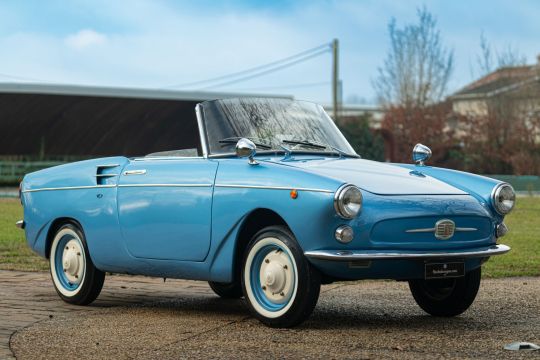





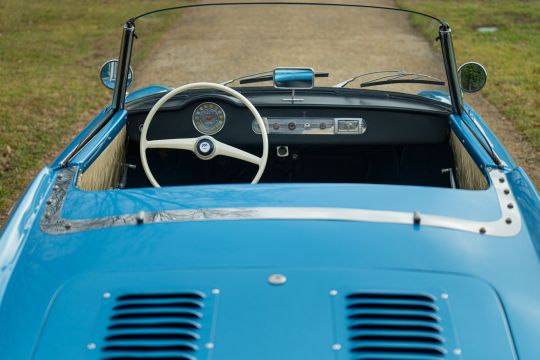
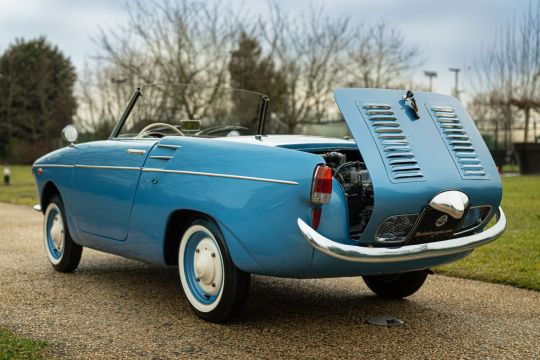


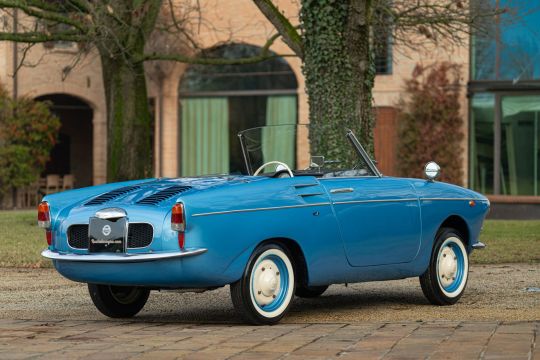
Fiat 500 Spider carrozzeria Allemano 1957. - source Ruote da Sogno.
63 notes
·
View notes
Photo


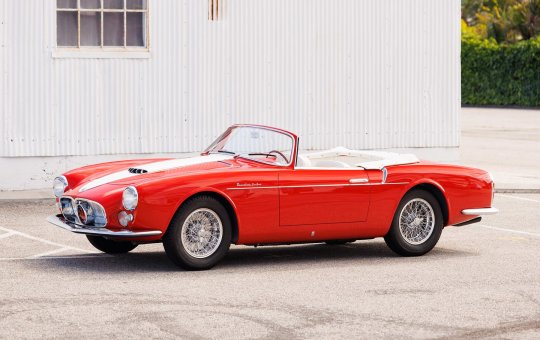


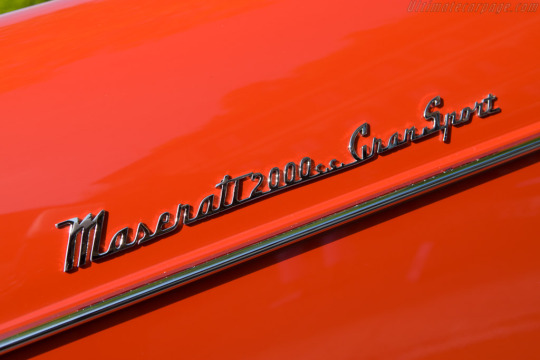


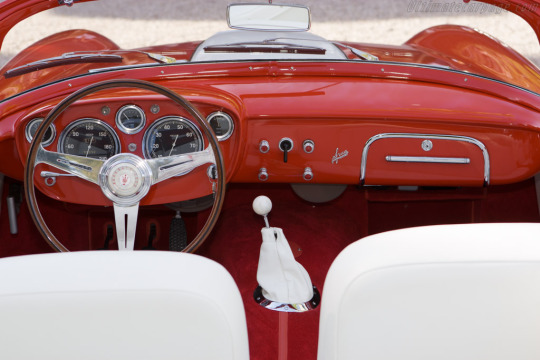

Maserati A6G/54 Spider by Frua (1 of 10).
From 1954 Maserati offered the final edition of the A6G sports car. As with its predecessor, the sales designation 2000 GT was frequently used in brochures and advertisements. On the race tracks of the World Sports Car Championship, the corresponding offshoots were called A6GCS. By 1957, only 60 Maserati A6G/54 cars had been built, with the bodies being exclusively built by external coachbuilders such as Allemano, Zagato and Frua.
So the A6G/54 presented at the Paris Motor Show in October 1954 had to meet high expectations. On the one hand, its driving performance was to clearly exceed that of its direct predecessor. On the other hand, Maserati naturally also wanted to increase its production figures again. And last but not least, there was direct competition with Ferrari, an up-and-coming company that had been enticing customers by building sports cars in the immediate vicinity since 1947. Accordingly, the engineers under Gioacchino Colombo began to thorougly rework the two-liter inline six-cylinder engine. Compared to the A6G, the ratio of bore to stroke was changed, turning a long stroke engine into a short stroke engine with two overhead camshafts. Compared to the A6GCS, Maserati used a chain instead of sprockets to drive the camshafts in the A6G/54 to improve reliability in everyday use. These measures increased the revs and thus the power output, which in this case was around 50 percent higher than that of the predecessor. Expressed in figures, 110 kW/150 hp was initially available, later even 118 kW/160 hp thanks to dual ignition.
As already mentioned at the beginning, Maserati at that time only produced the engines, transmissions and the tubular frame made of steel tubes including suspensions for the A6G/54. Then they sent the components to the coachbuilder selected by the individual customer. The official brochures offered a choice of four bodies. Tipo A and Tipo B came from Frua, Tipo C from Allemano and Tipo D from Zagato. Pinin Farina had previously fitted various A6 and A6G chassis, but then fell out of favour with Maserati when they entered into close cooperation with Ferrari. Only for the A6GCS, a few bodies were still being built there at the request of Maserati dealer Mimmo Dei.
This dealer was also the one who started the ball rolling for the A6G/54 Frua Spider. After a Spider based on a A6GCS chassis with the engine of the A6G/54 was completed in Pietro Frua’s workshop in the spring of 1955, Mimmo Dei ordered a small series of ten vehicles. However, only the first one was given the same design as the original model. The other nine were given an extended front and other modifications in detail. Different bumpers and small fake air intakes on the rear fenders for example.
68 notes
·
View notes
Text
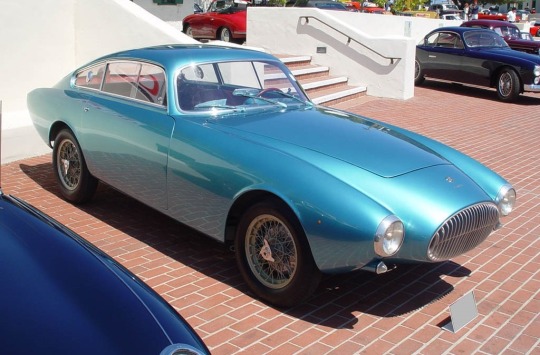
Cisitalia 202B Abarth by Allemano
20 notes
·
View notes
Text
Four eyes: 1963 Fiat 1500 Coupé by Allemano
This Fiat 1500 Coupé by Allemano is a rare and beautifully restored masterpiece. According to the seller, this car, designed by the legendary Giovanni Michelotti, exudes elegance with its blu bosforo paintwork and refined craftsmanship, echoing the sophistication of the Maserati 5000. The seller explains that the car was purchased in Italy in 2014 in “condition 3” and underwent a comprehensive…
4 notes
·
View notes
Text



1964 Allemano Abarth 2400 Coupé
My tumblr-blogs: https://www.tumblr.com/blog/germancarssince1946 & https://www.tumblr.com/blog/frenchcarssince1946 & https://www.tumblr.com/blog/englishcarssince1946 & https://www.tumblr.com/blog/italiancarssince1946 & https://www.tumblr.com/blog/japanesecarssince1947
14 notes
·
View notes
Text
youtube
#Maserati A6G-2000 Allemano#1956#1950s#pebble beach#Jonathan Segal#jay leno#maserati#Allemano#Jay Leno’s Garage#Youtube
0 notes
Photo
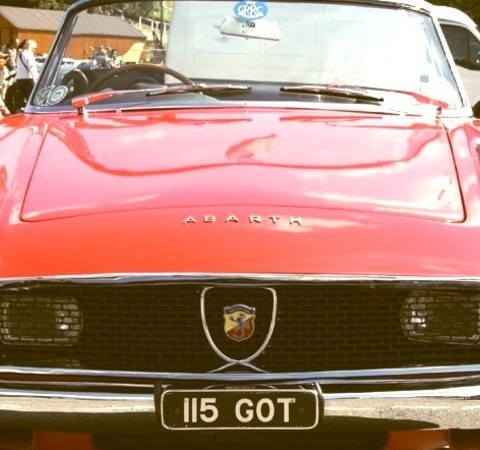
61 Abarth Allemano
1 note
·
View note
Text
LINA ALLEMANO: FLIP SIDE
È uscito lo scorso 4 ottobre il nuovo disco di Lina Allemano, trombettista, compositrice, improvvisatrice canadese-berlinese che vede nel CD, oltre che la sua adamantina tromba, Dan Peter Sundland al basso elettrico, Michael Griener, alla batteria e, talvolta ospite in alcuni brani, Andrea Parkins alla fisarmonica, oggetti ed elettronica. Lina e la sua tromba, pur avendo salde basi nel jazz, spaziano in territori liminari alla musica colta o cosiddetta tale. Ad aprire il magnifico lavoro del trio-quartetto “Lina Allemano’s Ohrenschmaus” (che significa smorfia), è il brano dal titolo “Sidetrack” che, in riferimento all’originalissimo nome della formazione, la prima smorfia la offre in apertura con una accattivante “intro” tutta rumorista, con qualche insufflazione di tromba, quasi a voler ingolosire l’ascoltatore su quanto successivamente lo aspetta. E in effetti il brano prosegue, dopo le fascinose titubanze iniziali, con la tromba della Allemano sempre più presente, anche se mai dominante, mentre le atmosfere restano inquiete; anche “Signal” si apre con rumori e percussioni, ma più decisi, come appare più certo e definito il ruolo della tromba. I toni sono rilassati e le parti sembrano più dialogiche, così come il “clima sonoro” in “Heartstrings” è pieno e ben definito, con la tromba che sembra aver preso decisamente il sopravvento o quantomeno, sembra tenere decisamente in pugno la situazione con un rumorismo delizioso, sia all’inizio che al termine del brano. Con “Sideswipe” (primo brano con l’intervento dell’elettronica di Andrea Parkins), il dialogo con la tromba diventa quasi un’invettiva dissacrante per un formidabile calando nelle parte finale dove spatole, carillon e ticchettii introducono l’ultimo lamento della tromba di Lina. Malinconico e lunare “Stricken” serba nel suo ventre un magnifico assolo al basso di Dan Peter Sundland che rende il brano quasi espressionista. “Flip Side”, che dà il titolo all’intero lavoro, è un pezzo sublime, di grandissimo spessore, notturno e solenne, dove le percussioni gravi e profonde sembrano dettare il tempo, un tempo di cupa sontuosità, con l’archetto del contrabbasso che diffonde rasoiate di vibrazioni rendendo ancora più drammatica l’atmosfera, ma sulla quale la tromba di Lina Allemano, ricama un disegno sonoro fatto di pacata leggerezza. È proprio in questo contrasto che vive “Flip Side”, ultimo brano dell’album edito dalla LUMO Records, etichetta della stessa compositrice, registrato dal vivo sul pavimento di una vecchia aula scolastica nel quartiere Schöneweide di Berlino, e non poteva essere altrimenti, poiché oltre ad essersi parzialmente stabilita a Berlino, Lina Allemano, pregna della cultura musicale della vecchia Europa, ha certamente assimilato la lezione della musica colta contemporanea della capitale tedesca, facendola rinascere a nuova vita, grazie allo straordinario sound della sua tromba, le cui radici sono saldamente piantate nella improvvisazione, nella ricerca e anche nel free jazz. Dopo una produzione discografica qualitativamente e quantitativamente notevolissima alla quale si aggiunge questa preziosa perla.

4 notes
·
View notes
Text
Lina Allemano — Canons (Lumo)
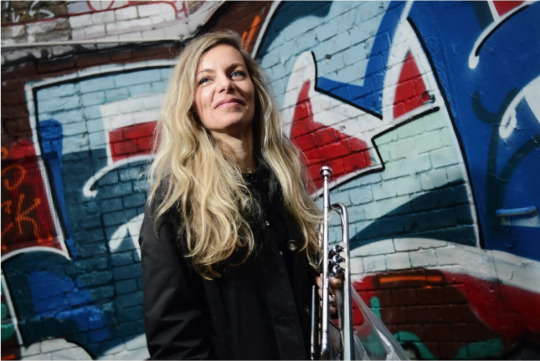
Photo by Manuel Meithe
A canon is a compositional technique involving the statement and restatement of a melody with controlled variations. Familiar examples include rounds such as “Row, Row, Row Your Boat” and Johann Pachelbel’s famous composition. In this recording, trumpeter and composer (and bandleader and label-runner) Lina Allemano experiments with the form in a set of small groups consisting of trumpet and one to three other voices, with cello by Peggy Lee, clarinet by Brodie West, bass by Rob Clutton, synth by Ryan Driver, guitar by Tim Postgate, trombone by Matthias Müller, and/or trumpet overdubs by Allemano herself; four other tracks include “live-processing/ effects” by Mike Smith. Allemano has worked with these collaborators before, and they commit fully to the project, which incorporates their improvisation into her compositions.
Especially given the variety in the instrumentation, each track has a distinctive feel. Opener “3 Trumpet Canon” begins with a classical-sounding flourish and ends in whispery breaths, while “Bobby’s Canon,” a lovely blend trumpet, cello, and clarinet, ebbs and flows through its variations. “Butterscones,” the first of the two tracks with Clutton, Driver, and Postgate, begins not unlike the opener but moves into atonal territory; the second, “Twinkle Tones,” begins in atonal territory and becomes more traditional-sounding near the end. Similarly, the sleek harmonies of the track with Müller are interrupted by a noisier middle section. The tracks with Smith represent an incarnation of BLOOP, his ongoing duo project with Allemano (Bill Meyer reviewed their 2021 release for Dusted). His real-time manipulation of her trumpet seems to stretch the canon form to its limits, with noise and effects serving to refract musical ideas often expressed in extended notes.
Canons is, according to the liner notes, the product of a kind of compositional game, and that lightheartedness pervades the album, in contrast with the more somber, Covid-focused Pipe Dream released earlier this year (which I reviewed in May), and this year marks the twentieth anniversary of Lumo, the label that Allemano founded and runs to release her music. So, this is a good opportunity to recognize her contributions to the scenes in Toronto and Berlin in particular and modern jazz in general. By providing an alternative to the corporate music industry, the hard work of Allemano and other musician-entrepreneurs such as, to choose a random example from the world of jazz, Whit Dickey’s Tao Forms, helps to ensure that adventurous and uncompromising music continues to be made and those with diverse tastes such as the readers of Dusted continue to have access to it.
Jim Marks
1 note
·
View note
Text

Fiat 1100 TV Allemano (1954)
1954-1956 Italy
99 notes
·
View notes
Text




Fiat 1100/103 Cabriolet, 1953, by Allemano. Another coachbuilt version of the Nuova 1100 designed by Michelotti, this one built at Carrozzeria Allemano along with a closed coupé version. Just 4 cabriolets were made and only 2 coupés.
#Fiat#Fiat 1100#Fiat 1100 Cabriolet#Allemano#Michelotti#Giovanni Michelotti#coachbuilt#1953#limited edition
199 notes
·
View notes
Text
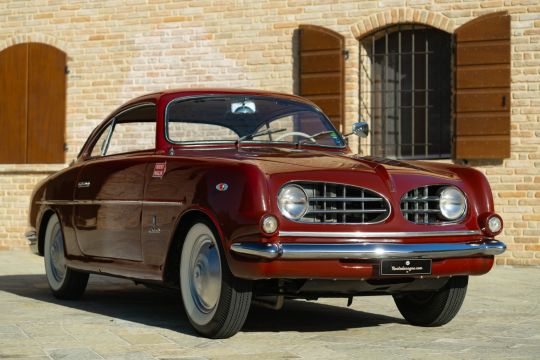
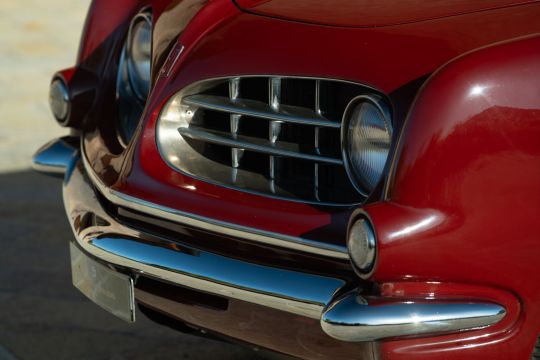
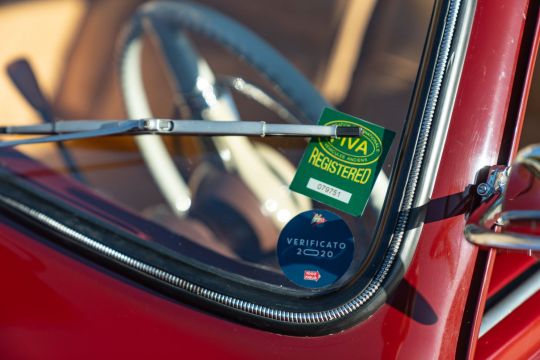

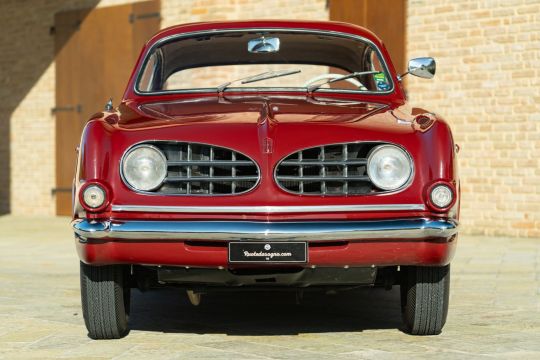
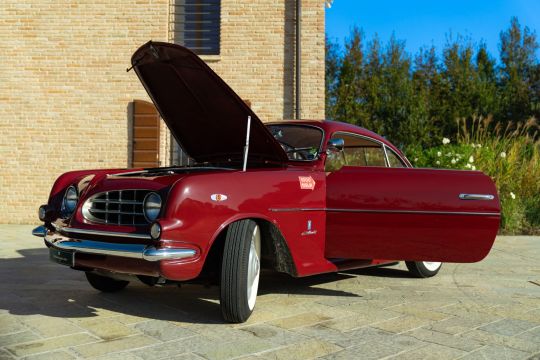
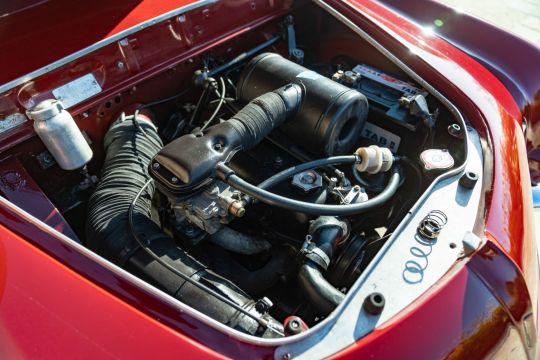

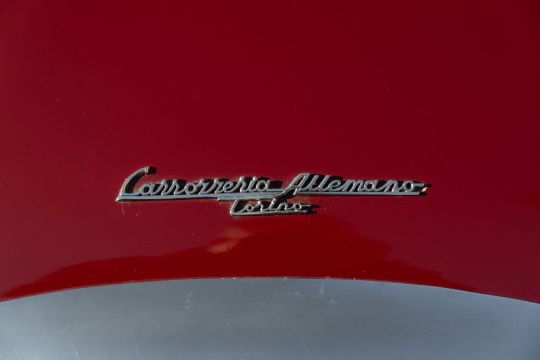

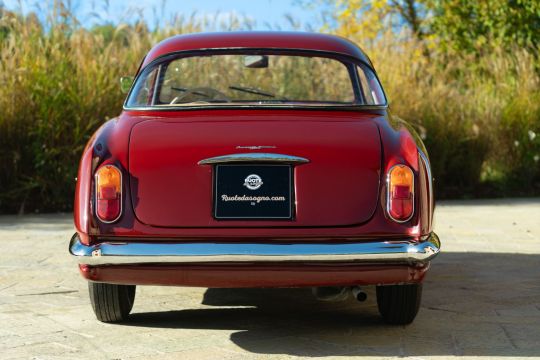
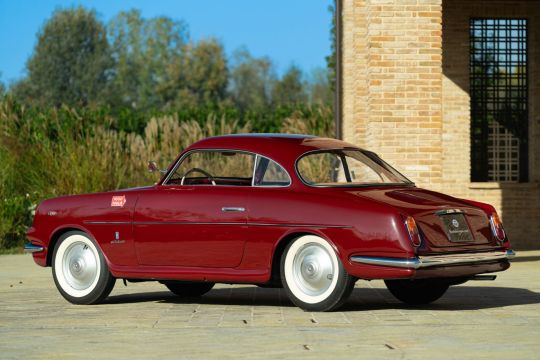
Fiat 1100-103 Coupe Allemano 1953. - source Ruote da Sogno.
44 notes
·
View notes
Text




Fiat Abarth Allemano Spider 1959
38 notes
·
View notes
Text
1959 Allemano Abarth 🦂 750 Spider

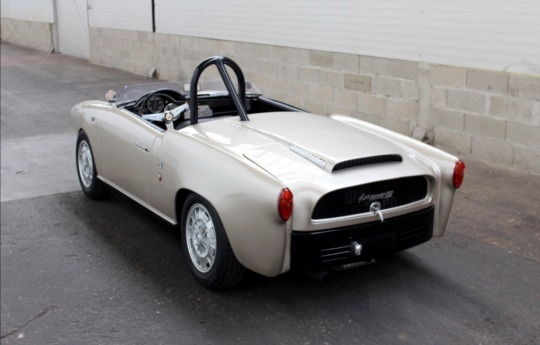
37 notes
·
View notes
Text
The last one: 1964 Cisitalia-Abarth 850GT Spider by Allemano
The Cisitalia Abarth 850GT Allemano Spider represents a cool piece of automotive history, born from the collaboration between Piero Dusio of Cisitalia and Carlo Abarth. By the way, this model was the last one with the “Cisitalia” badge on it. The seller states that this particular example, first registered in 1964, is a well-preserved original that has retained its charm – and the black plate –…
4 notes
·
View notes